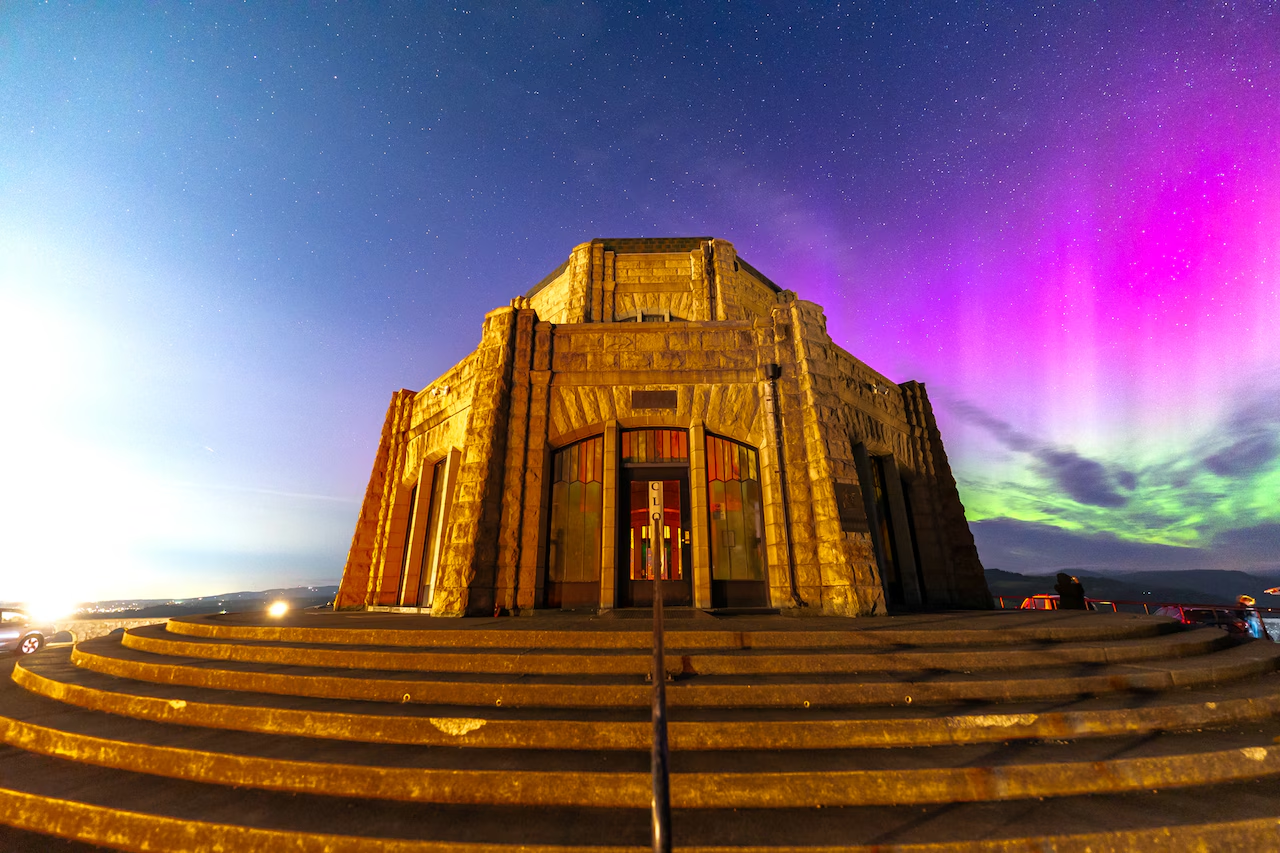PORTLAND, Ore. – Skies over northern Oregon could light up with the aurora borealis this Labor Day as a powerful solar storm sweeps across the Pacific Northwest.
Solar Storm on the Way
The NOAA Space Weather Prediction Center has issued a G2 (moderate) to G3 (strong) geomagnetic storm watch for Monday and Tuesday nights. Scientists say conditions could briefly spike to G4 (severe) — a rare event that occasionally pushes the aurora into lower U.S. latitudes, including Oregon.
The storm stems from a coronal mass ejection (CME), a giant burst of solar material launched from the sun. In this case, one CME is expected to overtake another, creating what scientists call a “cannibal CME,” which can amplify geomagnetic effects.
Also Read
Why It Matters Now
The storm comes as the sun enters the peak of Solar Cycle 25, an 11-year period of heightened solar activity. NOAA expects this active stretch to continue through 2026, raising the odds that auroras will occasionally dip into states like Oregon, Washington, and even farther south.
Tracking the Kp Index
Aurora visibility depends largely on the planetary K-index (Kp), a measure of global geomagnetic activity ranging from 0 (quiet) to 9 (extreme).
-
Kp 6–7: aligns with a G2–G3 storm and often allows auroras to extend into northern U.S. states.
-
Kp 8–9: indicates severe storms that may push auroras deep into the continental U.S.
Forecasters expect Kp levels Monday night to remain in the 6–7 range, enough to make Oregon a possible viewing zone.
When and Where to Look
For the best chance to see the northern lights, experts recommend:
-
Timing: between 11 p.m. and 2 a.m. Pacific Time
-
Direction: look north under clear, dark skies
-
Best locations: the Columbia River Gorge, Hood River, and elevated areas east of Portland
Avoiding city lights is critical — rural areas and higher elevations provide the clearest vantage points.
Tips for Photographers
Capturing the aurora requires patience and the right settings:
-
Long exposures: between 2 and 8 seconds
-
Focus: set to infinity if your lens allows
-
Stability: use a tripod or solid surface to prevent camera shake
-
Smartphones: use “night” or “aurora” mode if available; otherwise, adjust aperture, shutter speed, and ISO manually
To minimize blur, enable your camera’s timer option so the shutter releases without vibration. Experiment with different ISO and exposure combinations until the colors appear clearly.
A Rare Oregon Opportunity
While northern lights are common in Alaska and Canada, they remain rare in Oregon. Monday night’s storm represents one of the strongest aurora chances of the year for the state.
“If skies stay clear, Oregonians should have a real shot at seeing the aurora,” NOAA forecasters said. “The farther north you are, the better your chances.”
Bottom Line
Clear skies, dark surroundings, and a northern horizon are all that’s needed. For those in northern Oregon, this Labor Day storm could provide a dazzling, once-in-years chance to watch ribbons of green and red light dance overhead.
Pack a camera, head away from city lights, and look north — nature’s light show may be waiting.












